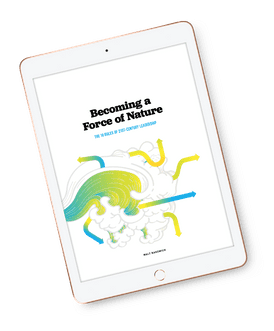Leadership requires courage because it takes us to uncomfortable places. Like the storm chasers who rush toward a tornado, transfluent leaders need courage to confront the storms they face. The most significant storms however, aren’t external. Instead, they are the storms that live within. We need to understand the ageless leadership challenges of fears and pride—and why access, diversity, and acceleration make them even more daunting to leaders today than ever. Because before we can be a transformative influence, we must chase these internal storms and the personal demons that create them.
Never miss a post about leadership, transparency, and trust by signing up for my weekly mailing list, delivered right to your inbox. Sign up here.
All leaders have internal storms, and I believe the two most significant internal storms that we all face as leaders are pride and fear. I think that’s the case because I believe the best leaders are ones that influence other people. But the problem with pride and fear is it’s all about you, right? By that I mean, it’s like what are you prideful of, or what are you fearful of? It’s “I, I, I.”
And nobody wants to work for leaders that are self-absorbed. That’s the problem. And so, I believe you need to build a microclimate around those internal storms, a microclimate that allows you to get past your own pride and fear.
And I think the best way to do that is actually to ask. I’m a big believer in coaching. I’m a big believer in having a personal board of directors. I’m big believer in accountability groups. I’m a big believer in people who go out and ask others how they’re doing.
And there was a time during the downturn at Prologis where I really believed that we needed to bring a coach in to talk to the management team to help us to work together better. And most coaches that do the job will come in and they’ll tell you we’re going to do a self-assessment on you, and by the way, we’re going to interview 20 people around you, and we’re going to find out what they think of you.
And it’s interesting what you find.
So my coach met with me and he said, “Walt, everybody likes working with you. That’s the good news.” He said, “The bad news is that your empathy scores are not all that high.”
I said, “What? Come on.”
He said, “No, your empathy scores aren’t high. The problem, Walt, is that you’re too busy, and some of your direct reports feel that you’re just too busy to talk to you and you’re running around like a chicken with your head cut off.”
That was like a dagger in my heart because I didn’t think that I was that way, but I was. And basically, I was letting the fear associated with not getting something done get in the way by relationships. And so I worked with them on working on empathy, right?
And I think I became a more empathetic leader. I’m not the best, but I’m more than I was. And I think in doing that, I built more trust with the people that reported to me.
And so that’s an internal storm, and it’s an internal storm I didn’t know anything about, but an internal storm that I had to try to figure out how to build my own microclimate around it to deal with it.

Becoming a Force of Nature
10 RULES FOR HIGH-PERFORMANCE TEAM LEADERSHIP
In this guide, you’ll learn how to transform your organization into an ultra-productive, highly influential company. And it’s all done by becoming what’s called a transfluent leader.
